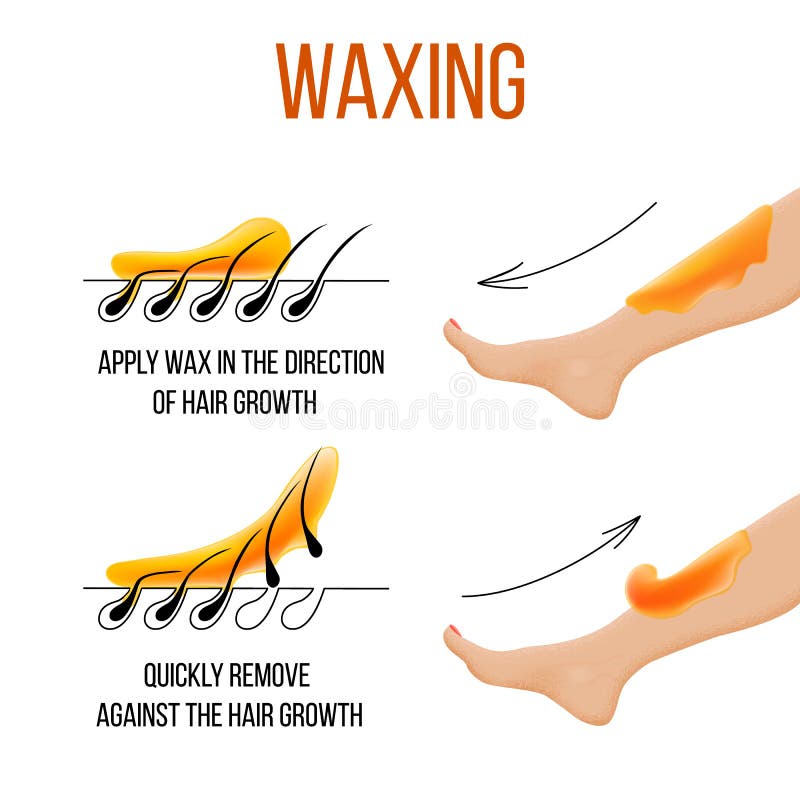Professional Waxing Providers: Smooth and Lasting Outcomes
Professional Waxing Providers: Smooth and Lasting Outcomes
Blog Article
Mastering the Art of Shaving: Important Tips for a Pain-free Hair Elimination Experience
In the world of personal grooming, grasping the art of waxing is an ability that can dramatically boost one's hair removal experience. From pre-waxing preparation to picking the best wax and mastering appropriate waxing methods, the journey to a pain-free shaving experience is led with knowledge and experience.
Pre-Waxing Preparation
Before undergoing a waxing session, it is necessary to effectively prepare your skin to decrease pain and achieve optimum hair elimination results. Begin by exfoliating your skin a day or more before your visit to eliminate dead skin cells and prevent in-grown hairs. This action helps the wax stick far better to the hair, guaranteeing an extra reliable removal procedure. Avoid hydrating on the day of your waxing session as it can develop a barrier in between the wax and your hair, leading to much less effective outcomes. Additionally, it is a good idea to cut your hair to concerning a quarter of an inch before waxing to avoid unnecessary discomfort throughout the procedure.
Furthermore, it is crucial to cleanse your skin thoroughly before waxing to remove any kind of oils, lotions, or dust that can disrupt the wax's ability to hold the hair. This action not only boosts the efficiency of the shaving procedure but also assists minimize the danger of post-waxing outbreaks - Laser Hair Removal. By following these pre-waxing preparation actions, you can make certain a smoother and a lot more comfortable hair elimination experience
Picking the Right Wax
Selecting the appropriate kind of wax is essential for making certain a comfortable and effective hair elimination procedure. There are a number of kinds of waxes available, each catering to different skin kinds and hair appearances. The two main categories of wax are tough wax and soft wax. Hard wax is ideal for delicate locations like the face, underarms, and swimwear line as it adheres only to the hair, making it much less agonizing for these fragile areas. On the other hand, soft wax is ideal for larger areas like legs and arms as it is used thinly and eliminated with cloth strips.
When selecting a wax, consider your skin level of sensitivity, hair thickness, and the area you prepare to wax. Rugged hair might call for a wax particularly developed for solid hair removal.
Appropriate Waxing Technique
To begin, it is vital to clean the skin completely prior to using the wax. Furthermore, constantly make certain that the wax is heated to the right temperature to prevent burns or ineffective hair removal. Applying the wax in the direction of hair growth and eliminating it against the hair development helps to guarantee that the hair is drawn from the origin, resulting in smoother and longer-lasting outcomes.
In addition, using small sections of wax at once and pushing firmly on the wax strip prior to removal can aid enhance the effectiveness of the process. Last but not least, remember to use mild pressure on the skin after waxing to lower and soothe any kind of discomfort redness. By complying with these correct shaving strategies, you can accomplish a much more successful and pleasurable hair removal experience.
Aftercare Tips

Furthermore, it's suggested to avoid tasks that might create extreme sweating, such as intense exercises, quickly click to find out more after waxing to avoid further inflammation. If any kind of redness or bumps linger after waxing, applying a chilly compress or aloe vera gel can help in reducing swelling - Laser Hair Removal. Adhering to these aftercare pointers carefully can make certain a reliable and comfy waxing experience with long-lasting results

Troubleshooting Common Issues
Resolving typical problems that may occur throughout the shaving process is essential to making certain a smooth and effective hair removal experience. One usual issue is skin inflammation, which can take place due to delicate skin or improper waxing methods. To relieve this, utilizing a relaxing lotion containing aloe vera or chamomile post-waxing can assist relax the skin. Another issue is ingrown hairs, where hair swirls back or expands laterally into the skin after waxing. Routine exfoliation with a gentle scrub can stop in-grown hairs by getting rid of dead skin cells and allowing hair to expand openly. Additionally, if you experience bruising or soreness after waxing, applying a cool compress can minimize inflammation and soothe the skin. Lastly, if you notice irregular hair elimination or patches of missed hair, take into consideration readjusting your waxing strategy or seeking expert help for more elaborate areas. By dealing with these usual waxing problems proactively, you can boost the total performance and convenience of your hair elimination routine.
Conclusion
In verdict, mastering the art of waxing requires correct preparation, picking the best wax, using the right method, and adhering to aftercare suggestions. With method and attention to information, waxing can be an efficient hair removal method.
Moreover, it is image source vital to cleanse your skin completely prior to waxing to eliminate any kind of oils, lotions, or dirt that could interfere with the click this link wax's capacity to grasp the hair. The two main classifications of wax are hard wax and soft wax.When choosing a wax, consider your skin sensitivity, hair density, and the location you prepare to wax.In addition, making use of tiny sections of wax at a time and pressing securely on the wax strip before removal can help enhance the efficacy of the process. After waxing, it's important to maintain the waxed area tidy and free from irritants.
Report this page